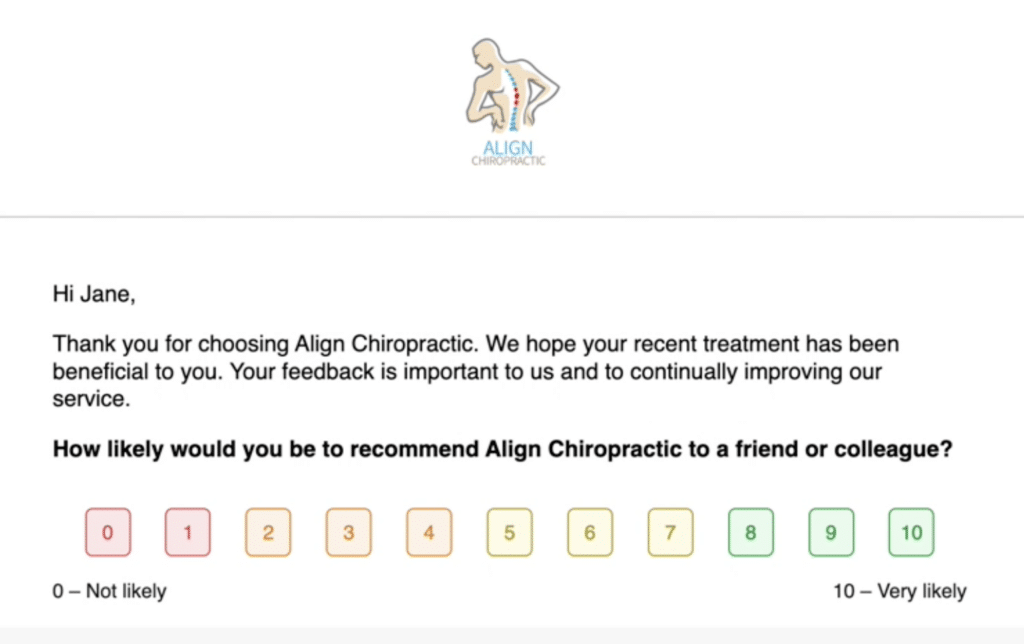Reviews are one of the most important signals in local SEO and will help you to both rank higher on Google and to persuade potential new patients to book an appointment.
However, persuading patients to leave them is not always easy. In this post we look at a few tactics to get more people to leave reviews.
When to ask for a review
Some practitioners don’t like to ask for a review until the patient has had a significant number of appointments and is able to accurately gauge the service they have received.
Whilst there’s logic and integrity in this, the start of the relationship is where both sides are more eager to please. If the first appointment goes well, ask for a review straight away. If the patient is coming back for further treatment, they’ll also want to ensure they do it before returning to maintain the positive relationship.

Incentivising reviews
Many businesses offer something in exchange for a review, such as a small discount, or a charity donation for every review they get.
Whilst this is commonplace, it is strictly against Google’s guidelines, even if you make it clear that the customer can leave any sort of review they like (positive, negative or other), and that the incentive goes to a worthy cause rather than “bribing” the customer. If Google find out you have done it, they will mark down your rankings and possibly cancel your reviews.
How would they know? By someone reporting you, such as a (very) disgruntled customer with an understanding of digital marketing, a competitor who hears what you’re doing, or a digital marketing agency working for one of your competitors.

Asking by email
You can get a review link from your Google Business Profile, and email it to your patients asking them to leave you a review.

The review link can be added to the auto follow-up email from Cliniko or similar, to ensure it gets to every patient.
In-clinic QR Code

This is a nifty product. It looks smart and can be placed in the clinic or waiting room. You can have them printed very cheaply by Zazzle.
In-person
It’s a good idea to mention to patients during their treatment session how important reviews are to the clinic and explain they will get a review link or can leave one using the QR code.
If you’re bold enough, ask on follow-up visits whether they’ve left a review yet. It’s fair to assume they like you if they’ve come back for further treatment, so fair enough to ask for a positive review!
In either case, pointing out that reviews are really important to the clinic and that you would really appreciate them leaving one will really help to get more people to do so.
Get a 3rd party to chase
Like many things, it’s easier when the request for a review comes from someone other than the clinician or business owner. For example, if the request comes from the receptionist or administrator, it feels less intrusive or awkward, and the 3rd party can also easily chase 2, 3 or 4 times. If the patient doesn’t want to leave a review or has negative feedback, they can say so much more easily on email to the faceless “administrator” than they can during their treatment session.
Of course, the 3rd party doesn’t have to be real. You could create another email address such as admin@ or reviews@, and send out review reminders from that address with a different name (if you don’t want to use a completely fake name, you could ask your spouse, friend, family member, etc. if you can use their name).

Use a reviews service
At MYCO we offer a reviews service to our marketing clients. You simply email addresses of people who have had appointments, and they receive an email asking them to rate the clinic 1-10.

People who leave a high score are redirected to the Google review screen, whilst people who leave a lower score are asked for feedback. Non-responders are automatically chased.
You can find out more about the reviews service here.
Conclusion and organisation
However you choose to go about getting reviews, the important thing is that you have a systematic approach to doing so, in order than no-one falls through the net.
Create a spreadsheet of patients, who has left and who hasn’t left a review, and the dates that you chase them to ask, and set aside a regular time each week to do your “review chasing”. In time, your reviews will build and you will get the benefits of a healthy review profile.
